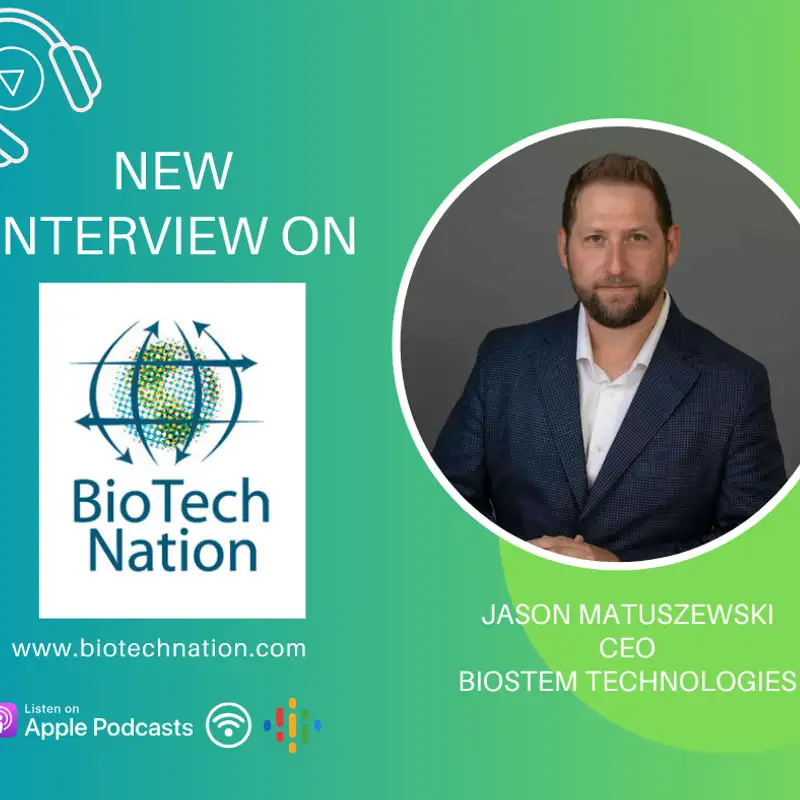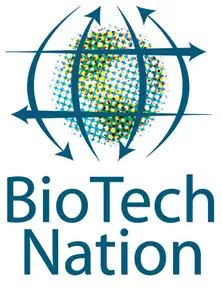When Wounds Won't Heal... Jason Matuszewski, CEO, BioStem Technologies
Wound care. You actually don't care much until you or someone you love has a wound, and it just won't heal. Here is one treatment of surprising origin available today. Jason Matuszewski is the CEO of BioSTEM Technologies. Jason, welcome to the program.
Jason Matuszewski:Thank you for having me.
Dr. Moira Gunn:Now we're talking about wounds today. Real wounds on the skin, both horrible to live with and difficult to treat. Examples would be, diabetic foot ulcers, leg ulcers, primarily in the lower leg due to low blood flow, and pressure ulcers, which we would also call bedsores. Now all of these wounds can be long term, they can be a huge challenge to heal and they can actually adversely affect the overall health of the individual. Who gets these wounds and how big can the wounds get?
Jason Matuszewski:Yes. Typically, we see these wounds affect a large portion of Medicare beneficiaries. There's about fifty million Medicare beneficiaries today, and about ten million of them are affected by these types of wounds. Some of these wounds could get as big as a four inch by eight inch rectangle. So pretty pretty large, substantiated wounds.
Dr. Moira Gunn:So there are all kinds of products out there with respect to wound care. And actually, there are a number of products which start which start with placental tissue. And here's where BioStem operates. So let's start with why placentas? And equally interesting, where do you get the placentas?
Jason Matuszewski:Placental tissue is very rich in a lot of factors, nutrients, growth factors, proteins, etcetera. And so it's a great source material to look at utilizing it for these chronic wounds that are kinda stuck. Right? They're stuck in a in a position where they can't get healed. So it's a it's a really good starting point, for developing these products.
Jason Matuszewski:We work with a multitude of collection agencies throughout The United States to support and working with prospective mothers to, donate this type of tissue based on a successful, cesarean section birth. And so it we're really gracious of those donors for, supporting this effort in developing these products for, frankly, folks that are on the other side of, the coin, typically older, men and women that have these types of chronic wounds.
Dr. Moira Gunn:Now how is it that a placenta from someone else who has a different DNA and their baby has different DNA again, How is it that that can be used for other people?
Jason Matuszewski:Also, you very unique property about placental tissue is it's immunoprivileged, meaning, you know, it doesn't have a it doesn't elicit immune response when placed on a another recipient. Think of it as, you know, when a baby is in the womb, it it it's not getting attacked by the mother. Right? So there's an immune privilege barrier there. A lot of that barrier is actually the placental tissue material.
Dr. Moira Gunn:Now you have three products. They're all a brand name called Vendaje, which is V E N D A J E, which is Spanish for bandage, which is very good. That makes sense. And there are three of them. What are they and how do they differ?
Jason Matuszewski:So our first product is Vendaje, which is the amnion layer of the placenta, and it's used for more surface based wounds. The product is very thin. Think of it very almost like a very thin saran wrap in a way. The second product is Vendahe AC, which is a little bit thicker, includes the amnion intermediate and chorion layer, so both sides, the mother's side and the baby's side. And it's used for more complex wounds that are a little bit deeper in nature and have a little bit different handling characteristics.
Jason Matuszewski:And the last product is Vendahe Optic, which utilizes all of the properties of Vendahe, but cut into circles for use in the optic space.
Dr. Moira Gunn:So this I assume you mean skin on the eyes. How is that different?
Jason Matuszewski:So, you know, it's usually used for maybe surface burns. So say somebody gets something in their eye, a chemical or whatnot, and it causes a burn on the surface of the eye, this helps reduce the inflammation in their eye as well as improves that scarring. Or they maybe got a cut on surface of their eye, and it helps reduce both inflammation as well as the scarring attributes of having that cut.
Dr. Moira Gunn:So what other prep do you have to do, and how big are these sheets?
Jason Matuszewski:Yeah. So specifically in diabetic foot ulcers as well as venous leg ulcers, the provider usually has to clean the wound bed. That entails cleaning that surface to make sure that there's good, healthy tissue there. And then subsequently, the material is placed on the surface of that wound. The sheets vary from sizes of a half inch by half inch to as big as four inches by eight inches.
Dr. Moira Gunn:And if the wounds are bigger, do you just use multiple sheets?
Jason Matuszewski:That is correct.
Dr. Moira Gunn:You just lay it in. Now, typically, this is done on a weekly basis. I mean, you clean the wound, you lay in the appropriate size sheet, but do you have to remove what you put in before? Do you have to put anything on top of it? How does that work?
Jason Matuszewski:No. I mean, one of the amazing attributes of this tissue as well is that it engrafts or ingrained into the patient's skin. So typically when the provider goes to apply another application, they're looking to just clean that area of possible dead skin before they look to apply another application of the product.
Dr. Moira Gunn:I'm guessing that the wounds are all a bit different and the people are different and their situations, their living situations are different. Are we getting better at treating these wounds? I mean, do we know?
Jason Matuszewski:I mean, I think I think, you know, we've come a long way from using maggots to treat wounds to this, you know, advanced technology like using placental tissue. So I'd I'd like to say we yes. We are getting better at this. But, you know, as as we can kinda continue to develop these products going forward, I think there's some future technologies that that can be used also. I think some of the material early on when when utilizing this type of product for wounds was very similarly just air dried.
Jason Matuszewski:I think their goal was to make sure that the product didn't have any sort of transmission of diseases or or potential infection to a patient. And what we've done is developed a new process to actually retain a lot of the natural properties of that tissue. And what we notice is that we have a significant amount of collagen, almost three times the amount of surface collagen, as well as an order of magnitude of specific growth factors like VEGF. And there's other elements within the placental tissue that are retained through our process north of 10 to 15 different factors that really support healing outcomes with our product. And we've evaluated this technology in regards to how quickly it heals.
Jason Matuszewski:Something that we've looked at is retrospective or real world data and noticed that these wounds are healing a lot quicker with our technology. And currently, we're actively enrolling patients in several randomized controlled trials to have a rigorous study to demonstrate this also.
Dr. Moira Gunn:As you mentioned earlier, we have over ten million people with these wounds. How many treatments can you get from a single placenta?
Jason Matuszewski:Yeah. You can get several treatments from a single placenta. And I think, you know, as we continue to broaden the education about the gifted donation and really honor those donors that are willing to to donate their tissue, we're able to actually recover more and more material. You know, sadly, a lot of this material ultimately gets thrown away as medical waste. So the more we can forward educate at the OBGYN level, the more material that we are able to collect and actually use our technology to make more, these impactful pay products for these patients.
Dr. Moira Gunn:Well, Jason, thanks for joining me. I hope you come back and see us again.
Jason Matuszewski:All right. Thank you so much, Poira.
Dr. Moira Gunn:Jason Matuzewski is the CEO of BioSTEM Technologies. More information is available on the web at biostemtechnologies.com.

